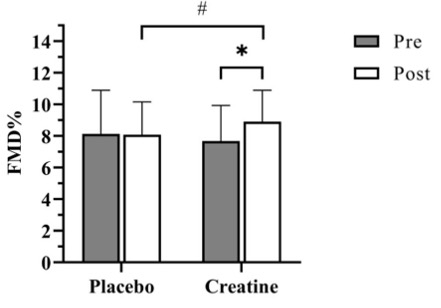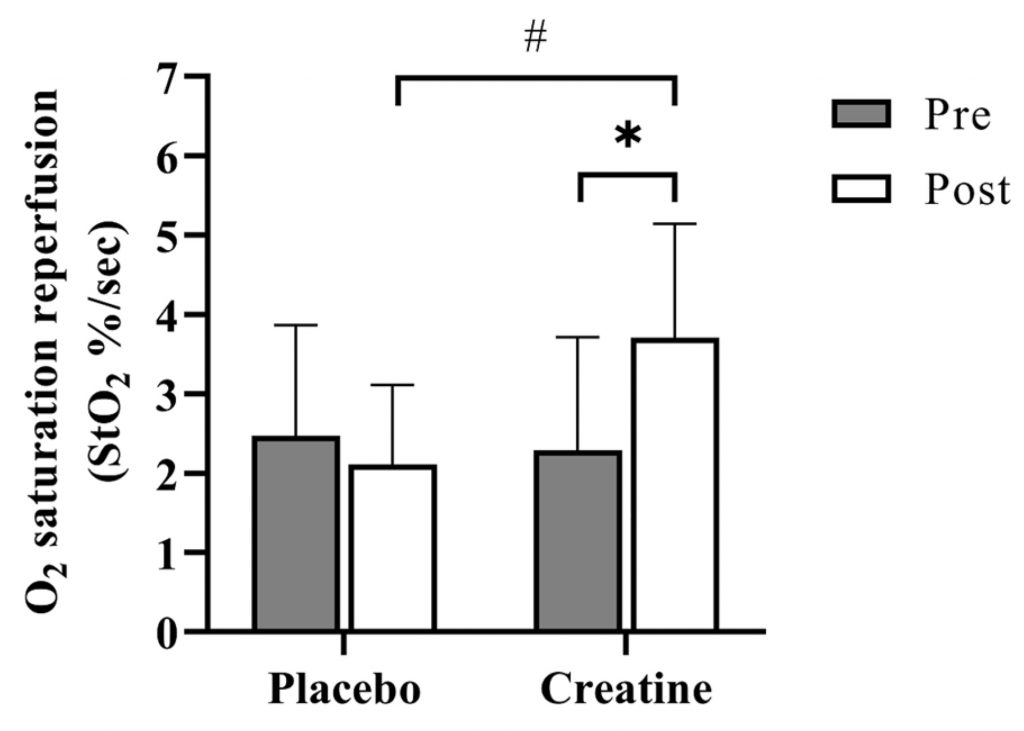Key Points:
- Creatine promotes artery dilation, which is important in reducing the risk of cardiovascular disease.
- Small blood vessels also function better with creatine, promoting cardiovascular health.
- Supplementing with creatine counteracts high blood glucose and triglyceride levels, which are risk factors for cardiovascular disease.
Cardiovascular disease remains the leading cause of death worldwide, shortening the lifespans of millions. Most cardiovascular disease treatments target the arteries, such as statins, yet the deterioration of smaller blood vessels — our microvasculature — is also linked to the progression of cardiovascular disease. Some scientists even argue that microvasculature deterioration is the cause of aging.
In light of searching for a cost-effective preventative measure against cardiovascular disease, researchers from Florida State University have discovered that creatine combats both artery and microvasculature aging. Their findings add to the growing body of evidence demonstrating the body-wide anti-aging effects of creatine supplementation.
Creatine Promotes Large Blood Vessel Expansion
To investigate the effect of creatine on cardiovascular aging, 12 healthy older adults (6 men and 6 women) were chosen as participants. The participants were randomly selected to receive either creatine monohydrate or a placebo for four weeks. They were subjected to several measurements assessing their cardiovascular health, including the dilation of their arteries.
Healthy arteries readily dilate (expand) to increase blood flow, but with age artery dilation gradually decreases. To measure artery dilation, the researchers employed the flow-mediated dilation (FMD) test, whereby artery diameter is detected using an ultrasound. A 1% decrease in FMD, which indicates a reduction in artery dilation, is associated with a 13% increased risk of cardiovascular disease-related events, such as heart attacks, strokes, and heart failure.
FMD was measured from the participants’ brachial artery, a major artery that supplies blood to the arm. FMD was first measured at baseline, then after occluding the artery with a rapidly inflating blood pressure cuff, which reduces blood flow. In response to occlusion, the cells that line the artery release vasodilators — artery-dilating molecules. When the cuff is released, the increase in artery dilation leads to a massive increase in blood flow.
The results showed that FMD increased in the creatine group but not in the placebo group. These results suggest that creatine can improve artery dilation, which can combat cardiovascular disease. Notably, the increase in FMD observed is comparable to that achieved in previous studies with blueberries, coenzyme Q10, and Amlodipine Besylate, a blood pressure medication.

Creatine Enhances Small Blood Vessels
To assess microvasculature function, the researchers measured oxygen levels from the arm muscles of participants. This was done at the same time as the FMD test using a portable device that measures the absorption of light at specific frequencies, which can be used to calculate the concentration of oxygenated blood.
Oxygen levels were measured after the rapidly inflating blood pressure cuff was released. Faster perfusion of oxygen into the muscles indicates a more robust microvasculature. The results showed that oxygen levels increased in the creatine group but not in the placebo group. Such findings reveal that creatine can improve microvasculature function, again demonstrating its anti-vascular aging effects.

Creatine Lowers Blood Glucose and Triglycerides
High blood glucose and triglyceride levels contribute to the increased risk of cardiovascular disease. The researchers found that creatine significantly reduced both blood glucose and blood triglyceride concentrations. Notably, the average blood glucose concentration of the participants before taking creatine (~103 mg/dL) was in the prediabetic range (100-125 mg/dL). After taking creatine, the average blood glucose concentration was about 99 mg/dL, still close to the prediabetic range.
Larger Studies May Reveal More About Creatine’s Cardiovascular Health Effects
With only 12 participants, the study was not large enough to come to definitive conclusions about most of the measurements. The study was designed to find statistical differences with only the FMD measurements. This means that some of the negative results could turn out to be positive in a larger study with more participants.
For example, the researchers did not find that creatine combats oxidative stress, a biological driver of aging. However, they note that not all markers of oxidative stress were measured and future studies should assess oxidative stress and inflammation with more markers. The researchers also did not find that creatine reduces artery stiffness. However, a larger study may show that creatine reduces artery stiffness, a condition that increases the risk of cardiovascular disease-related events.
Combining Creatine with Exercise
Notably, the inclusion criteria for the participants of the study included low habitual activity, defined as less than 150 minutes per week of moderate activity.
“Older adults with low habitual physical activity levels were selected as the population of interest because lifelong exercisers exhibit greater arterial compliance and sustained vascular health than sedentary older adults,” said the authors.
This calls into question whether creatine supplementation has the same effect on individuals who consistently exercise over a lifetime. Moreover, there could be an additive effect, whereby creatine supplementation combined with exercise enhances cardiovascular health more than either would alone. Supplementing with creatine already has the well-known effect of improving muscle function in healthy adults, so this may be worth studying.